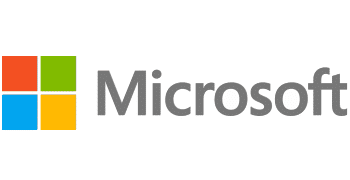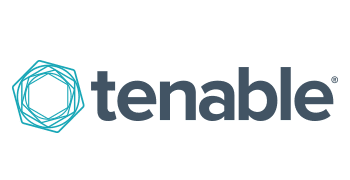We have implemented systems within some of the biggest companies in the financial and banking, gaming, ISPs, hospitality, carrier and telecom, and transport sectors, both locally and overseas. Computime are also the only recognised Authorised Training Centre for security training locally, providing a wide range of professional certification training courses on global cyber security technologies by our partners.
IT Security that protects your business and all it represents - data, customers, employees and its reputation
"We provide comprehensive and integrated security services to protect information as well as resources like enterprise networks, servers, desktops and laptops from internal and external threats including viruses, spamming or hacking".
What we do
- Preventive Maintenance
- Vulnerability Assessment
- VPN Implementation
- Perimeter and Desktop Security
- Password Management Systems
- Encryption
- Removable Disc Policy
- Intrusion Prevention
- WAN/VPN Accelerators
- Security Information and Event Management
- Content Filtering
Areas we cover
Network Security Firewalls
Perimeter Firewalls
Many organisations segregate network traffic depending on business rules and hence different levels of access. Network traffic can be categorised in two forms namely external and internal traffic. External or non-trusted traffic is all traffic activity that originates from outside your network. Internal traffic is what happens inside your network boundary. Perimeter firewalls segregate and control these two types of traffic. This protects your network from online hackers who target your systems to access your information. Internal traffic can be further subdivided into various categories. For instance servers hosting services such as web or email accessible from the internet are located in a demilitarised zone normally abbreviated to DMZ. Your internal servers running databases and storing user documents are located in dedicated segments away from end user networks or subnets connected to wireless access points setup to give temporary guest access. Firewalls also serve as a means of controlling this internal traffic through access policies with organisational access requirements.
Intrusion Detection/Prevention
Think of firewalls as systems which control which door is left open or closed. On their own, firewalls do not control what passes through that door once it is open. An intrusion prevention system works in conjunction with a firewall so that it validates whether traffic is legitimate or malicious. Intrusion detection appliances make use of highly specialised hardware to ensure the right protection during packet inspection without impacting network performance with unnecessary latency. These appliances are more commonly referred to as network-based IPS (NIPS). Other types of IPS exist; host based IPS (HIPS) whereby the intrusion prevention application runs on server or client hosts.
VPNs User Connectivity
It is very common for organisations to interconnect different branches and to give access to internal resources and information to remote users. This is done using what are known as virtual private networks, abbreviated to VPNs. These are networks that allow remote locations to connect using insecure communications mediums such as the Internet. Apart from connectivity, VPNs must allow for confidentiality of data during transport to ensure that data cannot be read if captured during transit, integrity to ensure that information is not changed while being transmitted and also authentication to ensure remote parties communicate with who they intend to. Remote branches use the Internet Protocol Security (IPsec) protocol for VPN connectivity. Connecting remote users to your network can be done in various ways. One method is to install what is known as a VPN client on the user’s host. These clients are usually configured with IPsec combined with server certificates to give the required network connectivity. Another method that is becoming increasingly popular is using Secure Sockets Layer (SSL) VPNs. This method is especially useful when specialised client software cannot be installed and hence access to internal information is provided using applications that are commonly found on the end-users’ system, such as the web browser. Today, it is becoming increasingly popular to ensure that before remote clients are given access to an internal resource, the client is first checked to ensure that it is free from any malware content. Failure to comply with a number of predefined security measures, such as latest updates for malware protection software, operating system updates or personal firewall activation, would deny any access unless these measures are adhered to.
Security Information and Event Management (SIEM)
SIEM deployments are driven by two main requirements – the need for added security monitoring capabilities plus address regulatory compliance issues. SIEM solutions collect logs from network and server systems to provide log archiving and reporting, plus real-time analysis and correlation of collected data. This allows for visibility of activity within the whole IT infrastructure, originating from both internal and external network access.
Shared Account Password Management (SAPM)
Access to any IT system, whether a server operating system, network appliance or firewall, is controlled by privileged accounts. These accounts are traditionally managed using strong passwords and manual activation and deactivation. Shared Account Password Managements (SAPM) solutions address the security limitations and threats posed by such methods by allowing IT administrators to automate privileged account policies and apply these to their IT systems. These policies allow for strong passwords to be regularly changed and stored in secure password vaults, provide unique identities to each individual administrator, centralise and limit host access based on the strict requirement access levels, plus provide measures of identifying who used privileged accounts.
Multifactor Authentication
The use of multifactor authentication is widely used especially in highly sensitive environments – it adds an extra level of security by not limiting this to a simple username and password combination. An undetected keylogger installed on the remote host would record the authentication credentials of the remote user and hence enabling the opportunity for unauthorised access. Multifactor authentication methods include the use of USB or soft tokens, authentication tokens that display a new code either on demand or every few seconds, using an authentication matrix for use during a challenge response authentication process, using host fingerprinting that allows for authentication to be performed only from specified hosts, or SMS authentication whereby access codes are sent directly to your mobile phone.
Endpoint Security Solutions
Endpoint security solutions mitigate damages from data theft and loss from compromised endpoints such as pcs, laptops and smart phones. For instance, full disk encryption ensures that in the event of stolen or lost property such as notebooks, data on the hard drive cannot be extracted since it is protected by what is known as pre-boot authentication which ensures that stored information will only be accessed once the correct credentials are supplied to the system.
Apart from disk encryption, endpoint security provides network and application firewalls that control how users can access different applications and also which applications are allowed to process and send information. This would for instance protect users from accidentally running malicious code that sends confidential information to non-intended recipients.
At the highest level, one can also choose to monitor the content of the information within recognised filetypes and control the flow based on the level of confidentiality it has been assigned or classified as.
Content & Data Security Solutions
Content Filtering
Usually associated with traffic that needs to be inspected whilst crossing internet boundaries, the two most common sources of internet activities that require filtering are email and web. Without adequate protection end-users become very easy targets for all sorts of malicious activities. These malicious activities include viruses, trojan horses, worms, spyware, spam, malicious mobile code, phishing attacks, bots and keylogger backchannel communications. Ideally these attacks are filtered both at the perimeter and also on servers and end-user systems. Through email filtering, for instance, a dedicated system receives all email traffic and performs many types of filtering methods such as content-encoding, regular expressions and proximity.
Similarly, web filtering solutions can be used to integrate with directory access databases to identify system users and control internet web access from malicious activities resulting from applications, URLs and protocols. Modern perimeter firewalls are also usually equipped with what is known as Unified Threat Management (UTM) which combine these filtering features and serve as a first line of defence against such threats.
Although it is extremely important to plug these detection systems on networks, this does not eliminate the need for specialised anti-malware software, more traditionally known as anti-virus, that is installed on servers and endpoint systems.
Data Loss Prevention
Securing data access based on the type of data being accessed is one of today’s major challenges. Data Loss Prevention (DLP) solutions prevent confidential information from being deliberately or accidentally leaked out of an organisation. These solutions operate by scanning network traffic and activity on endpoint systems to identify, monitor and protect confidential data. Visibility is required over the level of data confidentiality, the method used for data transfer (SMTP or file transfer for instance), data transfer destination, who is performing the transfer, and provisions taken to ensure data is properly secured.
Brands we represent
We partner with the biggest and best names in the industry to deliver world-class solutions that do exactly what our customers need them to for greater operational efficiency and business growth.
Get in Touch
Speak to us about how we can help you implement the right solution for you and to help you innovate and gain business agility and flexibility with a modern workplace experience.












